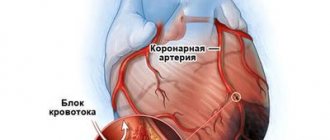- Causes of constipation in children under one year of age
- What to do if a child under one year old has constipation?
- Massage and gymnastics
- Additional preventive measures
- Medicines to combat constipation in children
Constipation in children is not uncommon.
On average, their prevalence is 25-30%1. While the child is very young, constipation can cause mothers great anxiety, as the baby is capricious, crying, but cannot explain what exactly is bothering him. And every mother wants to help her child, but often does not know how. Therefore, regular bowel movements are not only one of the important indicators of the baby’s health, but also an important factor in the peace of mind of parents. In the period up to one year, when the baby is actively developing, his digestive system develops along with him, so there is a possibility of constipation.
Infant digestion
A newborn is constantly in a state of adaptation to new living conditions. Its organs and systems continue to develop, and the physiological mechanisms of defecation are also improved.
In an adult, the retention of feces in the rectum is ensured by involuntary and voluntary, that is, subject to the will, contractions of its muscles - the sphincters.
The urge to defecate occurs when stool comes into contact with the lower intestine. An adult is able to control the urge, but a newborn child is not.
The milk enters the stomach and triggers a gastrointestinal reflex, generating a wave of peristalsis throughout the gastrointestinal tract. Feces fall into the rectum and cause the urge to defecate. Not realizing that the conditions for defecation are, to put it mildly, unsuitable, the baby draws in his legs and strains. Emptying your bowels makes room for more food.
The frequency of stool in a newborn often coincides with the frequency of feedings, but it can be twice a day3. The feces have a yellow or yellow-brown color, sometimes with a greenish tint, a mushy consistency mixed with foam and inclusions reminiscent of cottage cheese, and the smell of sour milk.
Starting at about 2 months, the frequency of stools begins to gradually decrease. By the time complementary foods are introduced (by 4-6 months), most infants have bowel movements 2 times a day, and some - once every 2 days3. The feces thicken and take on a sausage shape - this is what all small children should have.
Up to contents
What should be considered constipation in an infant?
It is understandable that the lack of stool in a baby causes concern for parents and often becomes the reason for unnecessary self-medication. On the other hand, lack of basic knowledge about the proper frequency of bowel movements in children sometimes leads to delays in necessary treatment and complications. Therefore, first, let’s figure out what constipation is.
According to generally accepted opinion, constipation in babies under three months of age is considered to be a delay in bowel movements for 2-3 days. If difficulties with bowel movements persist for two or more weeks, they speak of chronic constipation.2,3. At the same time, the frequency of stool decreases (in comparison with individual characteristics3), the feces become dense, fragmented, and acquire an unpleasant putrefactive odor.
To empty the intestines, the child strains hard and for a long time, his face turns red, his legs are drawn up to his stomach. Sometimes the contents of the rectum are so hard that they injure the delicate mucous membrane and cause painful cracks to form. In this case, the baby cries, and a strip of scarlet blood appears on the surface of the stool.
Constipation affects the general condition of the baby. He experiences pain and bloating in the abdomen, popularly called “colic,” he eats poorly, becomes lethargic and moody.
It is the appearance of common symptoms of constipation in a breastfed newborn that serves as a guideline for diagnosis4. If they are absent, the child eats well, does not spit up, gains weight normally, the condition is considered to be “pseudoconstipation”, which does not require any intervention4.
Up to contents
How to find out the reason?
Symptomatic measures that induce defecation become addictive over time and lose their properties. Therefore, one cannot hope that the child will grow up and everything will return to normal “by itself.” It is important that it is in the infant period that the conditions for pathology in adulthood are formed. Therefore, if there are repeated problems with stool retention, it is necessary to conduct an examination and find out the cause.
Ultrasound of the abdominal cavity can reveal congenital pathology. In mild cases, it is treated with conservative methods. If there are significant changes, you should agree to surgery. Consultation with a neurologist helps to find out the cause of intestinal atony. A pediatric gastroenterologist will monitor the baby’s diet, identify lactulose deficiency and provide nutritional recommendations.
Your child may need to be tested for food allergies.
Why might a newborn be constipated while breastfeeding?
Difficult bowel movements and lack of stool in infants in 95% of cases are caused by various functional disorders in the intestines1,5. The remaining 5% is due to diseases that disrupt the formation, movement and excretion of feces1,5.
Organic constipation
This type of defecation disorders is most often detected in the first days or months of a baby’s life1,3. Its cause is anomalies in the development of the intestine and rectum in particular, various neurological diseases accompanied by slowing and incoordination of gastrointestinal motility, metabolic disorders against the background of reduced function of the thyroid gland and brain centers regulating the endocrine system, cystic fibrosis, Hirschsprung's disease1,3.
In order not to miss these diseases, if constipation occurs in children from birth to 3 months, it is better to immediately consult a doctor. If the examination does not reveal any organic pathology, we are talking about functional constipation3.
Functional constipation
The nervous system is of great importance in the regulation of stool, and since it is not yet sufficiently developed in a newborn, there is always room for constipation to occur. Functional constipation against the background of intestinal dyskinesia, accompanied by weakened peristalsis or spastic contractions of the intestine that disrupt its patency, is the most common type of disorder3.
Other causes of functional constipation in infants:
- immaturity of the child and his digestive system, accompanied by a late “start” of digestive enzymes, long-term retention of food masses in the stomach and intestines, imperfection of the receptor apparatus of the rectum, which triggers defecation3;
- consequences of intrauterine oxygen starvation, affecting the functioning of the central nervous system and the regulation of intestinal motility;
- general muscle weakness of the baby due to prematurity, iron deficiency or active treatment of rickets with vitamin D3;
- intestinal dysbiosis, which occurs, for example, when antibiotics and pathogenic microbes influence the weak and unstable microflora of the children’s intestines3;
- allergy to cow's milk proteins: it can appear already during breastfeeding if the mother loves dairy products and often consumes them4.
Up to contents
Symptoms of trouble
Constipation is accompanied by restless behavior and increased gas production in the baby.
It takes several months for the child’s digestive system to adapt to the environment that has changed after birth.
His gastrointestinal tract is still so imperfect that it responds with negative symptoms to any errors in nutrition and changes in the usual lifestyle. Constipation in an infant may be accompanied by the following symptoms:
- restless behavior
- crying, lack of appetite, poor sleep,
- straining and crying when trying to defecate,
- tense tummy
- dense stools of unusual consistency,
- increased gas formation.
If the baby cannot go to the toilet, and the parents notice at least 1-2 of these symptoms, you need to contact your pediatrician and follow his recommendations.
Temporary stool disorders
Difficulty in defecation may be temporary. Many babies experience difficulty with bowel movements - they strain, grunt, and whine during bowel movements, although their stool remains soft and mushy. This condition is quite normal for children in the first two months of life; it is associated with the immaturity of the nervous system and is called “dyschezia”4.
Temporary disruption of bowel movements in a child may be due to the following factors:
- lack of fluid - in some cases the child needs to be supplemented with food, although some mothers believe that when breastfeeding, the baby receives a sufficient amount of fluid in the form of milk2.5;
- general dehydration of the baby against the background of high fever, vomiting and diarrhea, for example, with an intestinal infection or ARVI, when a large amount of water is lost through sweat, vomit and liquid feces 4;
- malnutrition of a nursing mother: a small amount of fluid, following an unbalanced diet, low fiber content and a large number of “fixing” foods in the diet2;
- underfeeding of the child due to a deficiency of breast milk (in this case, the woman may not even suspect that she has little milk) and the mother’s “tight” breasts, general weakness and persistent regurgitation in the baby2,5;
- too early and irrational introduction of complementary feeding2;
- abuse of enemas and means of mechanical stimulation of defecation in a child (gas tube, irritation of the anus, etc.)2;
- psychological factors2, which include the mother’s psycho-emotional problems, the absence of a mother and getting used to a nanny, moving, frequent contacts with new people;
- any diseases and teething - they affect not only the well-being, but also the emotional and psychological state of the child, and at the same time - on intestinal motility.
Elimination of all of the above factors leads to spontaneous normalization of the child’s stool.
Up to contents
What to do for constipation in a newborn while breastfeeding
You need to act based on the cause of constipation. When organic constipation is diagnosed, treatment for the underlying disease is prescribed by a doctor. Solving the problem leads to normal bowel movements.
For functional constipation, doctors recommend:
Breastfeed2.
Breast milk, containing the mother’s immune factors, provides the baby’s natural protection from infections, promotes the formation of his intestinal microflora and the development of the digestive system as a whole2. In case of weak lactation and lack of breast milk and unstable stool with a tendency to constipation in a child, doctors recommend supplementary feeding with adapted milk formulas with the addition of prebiotics2. They help maintain intestinal microflora, on which digestion partly depends2.
Follow the diet of a nursing mother
The composition of breast milk directly depends on the mother's nutrition, therefore, by changing nutrition, you can influence the baby's diet4. For the functioning of the baby’s gastrointestinal tract, it is important to maintain a water regime, vegetables, fruits, cereals, wholemeal bread eaten by the mother, that is, foods high in fiber4. You should limit the consumption of foods that provoke increased gas formation: cabbage, onions, tomatoes, rice, legumes, black bread, pears, grapes, mushrooms, pickles, smoked meats and spices3.
Prunes, dried apricots and simple boiled beets will help as a natural laxative during breastfeeding for constipation in a newborn - you just need to include them in the diet.
Fermented milk products are useful for maintaining intestinal microflora2. But if a child is diagnosed with intolerance to cow's milk, the nursing mother will have to completely abandon dairy products made from it4.
Keep your child physically active
A well-organized daily routine and physical activity are the most important factors in the treatment of constipation in a child2. Physical activity is selected individually according to the age of the child2. For newborns and infants during the first 5 months of life, their natural activity and special gymnastics are sufficient2. It is very important that clothes do not restrict the child’s movement and allow him to independently improve his motor skills in the process of exploring the world.
Do a belly massage
First of all, after feeding, you must keep the baby in an upright position so that he burps air, and then lay him on his tummy.
Abdominal massage involves lightly stroking the tummy in a clockwise direction, that is, in a circle, starting from the right iliac region and ending with the left iliac region. In this case, the child should lie on his back. At the end of the procedure, you need to hold the ankle joints and press the baby’s legs one by one to the tummy. This stimulates the passage of gases and bowel movements.
Use gas-reducing products wisely
A large amount of gases stretches the intestinal walls, weakens its peristalsis and leads to colic. Dill water, light fennel tea, and simethicone-based medications can relieve symptoms associated with constipation4.
In some cases, means that help mechanically remove gases from the intestines are useful, for example, a gas tube or enemas4. However, their frequent use aggravates the problem of constipation: the baby’s gastrointestinal tract begins to “become lazy” and ceases to independently perform its functions3.
Microclysters MICROLAX®
In the complex treatment of constipation in breastfed newborns, microenemas occupy a special place. They promote bowel movements and thereby alleviate the baby’s suffering.
MICROLAX® for children from 0 years old was created for the smallest children, equipped with a special short “spout” and can be used from birth to 3 years6. The drug contains sodium citrate, which displaces water from the stool, sodium lauryl sulfoacetate, which thins the contents of the rectum, and sorbitol, which stimulates the flow of water into the intestines6.
By enhancing each other's action, MICROLAX® components are able to soften stool and facilitate bowel movements6. In this case, the effect of the drug can begin in 5-15 minutes6.
It is important that the effect of MICROLAX® is limited to the final intestine. It is not absorbed, does not enter the general bloodstream and therefore does not affect the functioning of other organs and systems6.
For ease of use, MICROLAX® is available in the form of a disposable microenema equipped with a shortened spout tip6. It is enough to break off the seal and the microenema with 5 ml of the drug will be ready for use.
Up to contents
We're home
On the third to fifth day, the mother’s milk comes in, and by the end of the first week, the baby has fairly stable stools. The literature sometimes says that newborns’ stools are “creamy,” and this confuses mothers who begin to suspect that something is not all right with the baby. In reality, the stool of a healthy baby is liquid and not always homogeneous. The normal color of stool is yellow and its shades. You may notice lumps and a little mucus - it's not scary. Do not be alarmed if the baby’s stool has a greenish tint for up to three months due to the immaturity of the liver enzyme systems and the peculiarities of bilirubin metabolism, this condition has the right to exist and also does not require treatment.
Many mothers sometimes experience anxiety because the baby’s stool “suddenly” becomes watery and the child walks around with profuse gases and a sharp sound. Doctors in this case often suspect lactase deficiency. In reality, things usually work out like this. In the period from 3 weeks to one and a half months, the baby has frequent growth spurts, so at certain moments the baby literally “hangs on the chest” to help the mother produce more milk. Over the course of a day or several, the baby requires the breast more often and for longer than before, and the mother begins to suspect that there is not enough milk. As a result, she often begins to shift the baby from one breast to the other, and the baby receives mainly “foremilk”, which comes from each breast at the beginning of feeding. This milk is rich in carbohydrates and proteins, it makes the baby actively grow, but because of this milk the stool is liquid and gassy (sometimes the “result” looks foamy if the baby is held over a potty or basin when he needs to empty himself, and the mother can observe the consistency chair). In this situation, there is no need to panic - you just don’t need to constantly shift the baby from one breast to the other, for fear that he is starving. Give the baby the opportunity to receive hindmilk, rich in fat, which will not cause flatulence and will linger longer in the intestines.
In this situation (when the baby suddenly begins to clearly suck in more milk), the mother may feel unsure of herself and start drinking lactogenic teas. From this, more carbohydrates again begin to flow into her milk and the baby’s stool becomes more liquid and gassy.
Similar problems due to “foremilk” occur in the case of improper attachment to the breast, as a result of which the baby swallows the air and interrupts feeding, or simply cannot receive “hind” milk. The best way out in this situation is to consult with a breastfeeding specialist to correct the latching technique and stop panicking that the baby “doesn’t have enough milk.”
In a word, don’t worry if your baby has problems with stools of this nature. Of course, his intestinal flora is unstable, it is just beginning to establish itself - this will take at least three to four months. Your task is simply to feed the baby on demand and correctly and not to rush to treat him for imaginary diseases.
What not to do
First of all, don't wait for the problem to go away on its own. Repeated and prolonged bowel movements in infants always require consultation with a pediatrician.
In addition, it is not recommended:
- feed the baby strictly according to the clock - the baby himself “knows” how much milk he needs and when; feeding on demand promotes normal bowel function and, in addition, stimulates lactation in the mother;
- supplementing breastfeeding after regurgitation: this is a normal act that helps the baby get rid of air and excess food trapped in the stomach;
- supplement the baby with formula or completely switch to artificial feeding, believing that the baby does not have enough milk - the guideline for the fact that he has enough food should be good sleep and normal weight gain;
- frequently use a gas tube, resort to enemas and other methods of stimulating bowel movements;
- use traditional methods of stimulating the rectum, for example, inserting a piece of soap into the anus: soap irritates the mucous membrane and can cause a chemical burn; the laxative effect can be achieved using gentle means, for example, MICROLAX® microenemas;
- take medications without consulting a doctor - all of them can enter the child’s body along with milk and affect his body in general and the functioning of the gastrointestinal tract in particular.
Up to contents
Massage and gymnastics
Stroking a baby's tummy can ease his condition with colic and help treat and prevent constipation. In addition, massage has a restorative effect on the anterior abdominal wall. All movements are performed in the form of light stroking. Tactile contact, mom's smile and favorite songs will help the baby calm down. The massage is performed 1 hour before feeding and 1-2 hours after. For constipation, repeat the procedure several times a day.
- we start with circular stroking movements clockwise;
- stroke the oblique abdominal muscles from the edge of the body to the center;
- massage the area around the navel clockwise with the pad of your index finger;
- move on to the rectus abdominis muscles;
- We finish the massage with relaxing strokes of the entire tummy.
You can also supplement the massage with passive gymnastics. You can learn more about this topic in the article “Massage for the prevention of constipation.”











